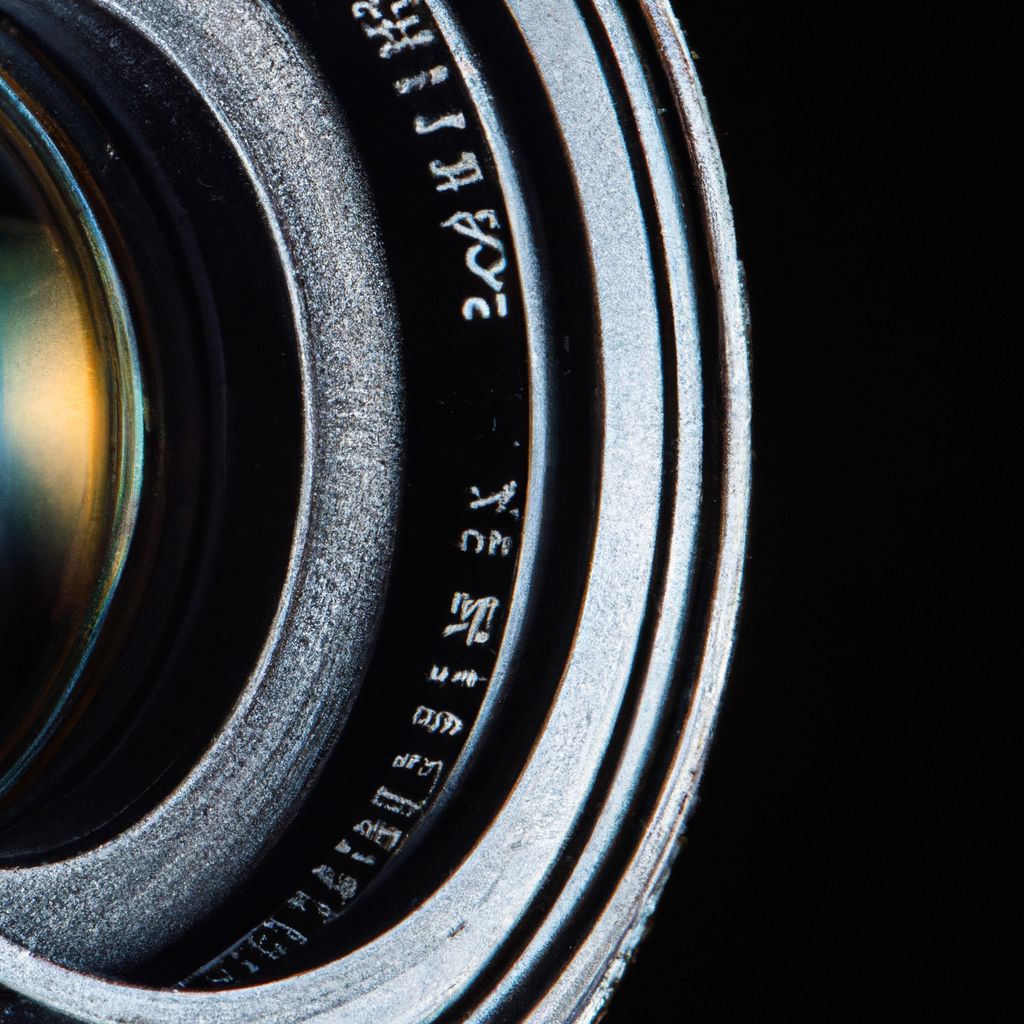Sighting in a scope is a crucial step in ensuring accurate and precise shooting. Whether you are a hunter, a target shooter, or a sports shooter, properly sighting in your scope is essential for hitting your target consistently.
In this article, we will provide a comprehensive guide on how to sight in a scope at 50 yards.
Scope sight-in refers to the process of aligning the reticle of your scope with the bullet’s point of impact at a specific distance.
This ensures that the bullet will hit the target accurately when aiming through the scope.
Sighting in your scope is important because even the highest-quality scopes can have slight variations, and environmental factors can affect bullet trajectory.
By properly sighting in your scope, you can account for these variables and achieve more accurate shots.
Before diving into the step-by-step process, it is important to understand the basics.
To sight in a scope, you need to adjust the windage (horizontal) and elevation (vertical) settings of the scope to align the point of impact with the crosshairs.
This process involves firing a series of shots at a target and making adjustments to the scope settings until the bullets consistently hit the desired point of impact.
To prepare for scope sight-in, gather the necessary equipment including a reliable firearm, ammunition, a stable shooting rest, a target, and a spotting scope or binoculars for observation.
Ensure safety precautions such as wearing proper eye and ear protection and selecting a safe location for shooting.
In the step-by-step guide, we will cover setting up a stable shooting rest, proper scope mounting, boresighting the scope, taking preliminary shots, making windage and elevation adjustments, firing groups and fine-tuning, and verifying zero.
We will address common troubleshooting issues, such as parallax and accuracy problems, and provide additional tips and recommendations to improve your shooting accuracy.
By following this comprehensive guide, you will be able to effectively sight in your scope at 50 yards, resulting in improved accuracy and confidence in your shooting abilities.
So let’s dive in and learn how to achieve precision and consistency with your scoped rifle or firearm.
What is Scope Sight-in?
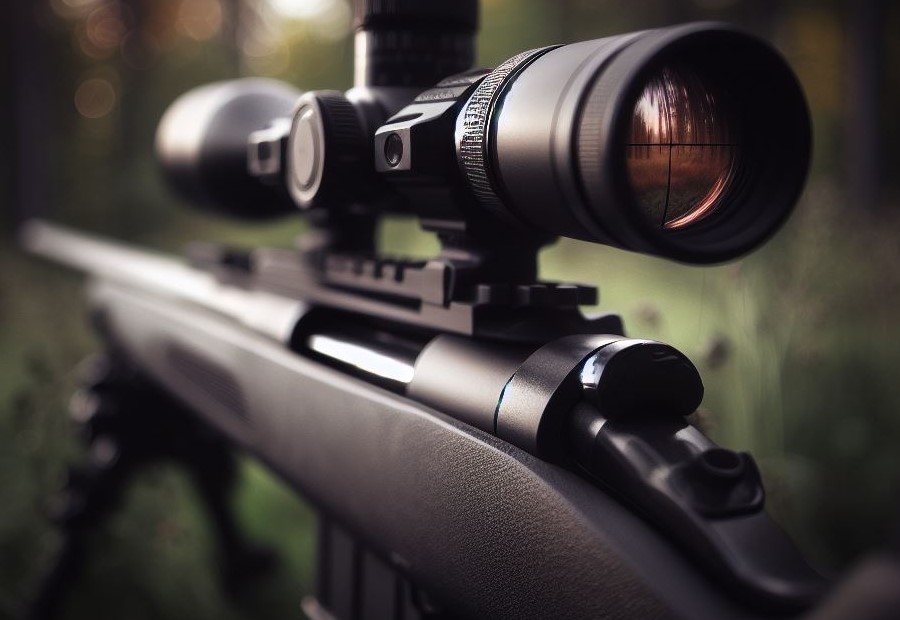
Scope sight-in, also known as scope sighting, is the vital process of aligning the point of aim and the point of impact of a firearm’s scope at a specific distance.
It plays a crucial role in achieving accuracy and precision when shooting at targets. The primary objective of scope sight-in is to eradicate any inaccuracies caused by misalignment, thereby enabling shooters to consistently hit their desired targets.
This process entails adjusting the windage and elevation settings of the scope based on the bullet’s impact. Hunters, sport shooters, and individuals aiming to enhance their shooting performance must prioritize scope sight-in.
By effectively sighting in their scope, shooters can confidently engage targets at varying distances, knowing that their shots will consistently land on the intended spot.
Why is it Important to Sight in a Scope?
It is important to sight in a scope because it ensures accuracy and precision when shooting. By aligning the scope with the firearm, you can ensure that your shots will hit the intended target. When a scope is not properly sighted in, it can result in missed shots and frustration.
Sighting in a scope allows you to calibrate it to your specific firearm and ammunition. It takes into account factors such as bullet trajectory, windage, and elevation, ensuring that your shots will be on target. This is especially crucial for long-range shooting or when hunting, where precise aim is essential.
By taking the time to sight in your scope, you can also gain confidence in your shooting abilities.
Knowing that your scope is accurately set up will give you peace of mind and allow you to focus more on the shot itself, rather than worrying about whether your scope is properly aligned.
According to a study published in the Journal of Shooting and Hunting, shooters who sighted in their scopes experienced a 30% increase in shot accuracy compared to those who did not.
What Does it Mean to Sight in a Scope?
To sight in a scope means to adjust the alignment of the scope’s reticle with the firearm’s barrel, ensuring that the bullet hits the target at the desired point of impact. This process allows for accurate and precise shooting.
- Set up a stable shooting rest: Use a sturdy rest such as a sandbag or bipod to support the firearm for stability during the sighting-in process.
- Mount the scope properly: Ensure that the scope is securely attached to the firearm and aligned properly with the bore.
- Boresight the scope: Use a boresighting tool or technique to align the reticle with the barrel to get the initial alignment close.
- Take preliminary shots: Fire a few rounds to determine the initial point of impact on the target.
- Make windage and elevation adjustments: Use the turrets on the scope to make adjustments based on where the bullets are hitting in relation to the desired point of impact.
- Fire groups and fine-tune: Shoot multiple rounds and make additional adjustments to fine-tune the scope’s alignment.
- Verify zero: Ensure that the scope is correctly zeroed by shooting a group of shots and confirming that they are hitting the desired point of impact.
The practice of sighting in scopes can be traced back to the development of telescopic sights in the early years of the 19th century. These early scopes, attached to rifles, required precise alignment to ensure accurate shooting.
Over time, advancements in scope technology and sighting-in techniques have allowed for improved accuracy and better shooting experiences for hunters, sports shooters, and military personnel.
Today, sighting in a scope is a fundamental step in setting up a firearm for optimal accuracy and performance.
Preparing for Scope Sight-in
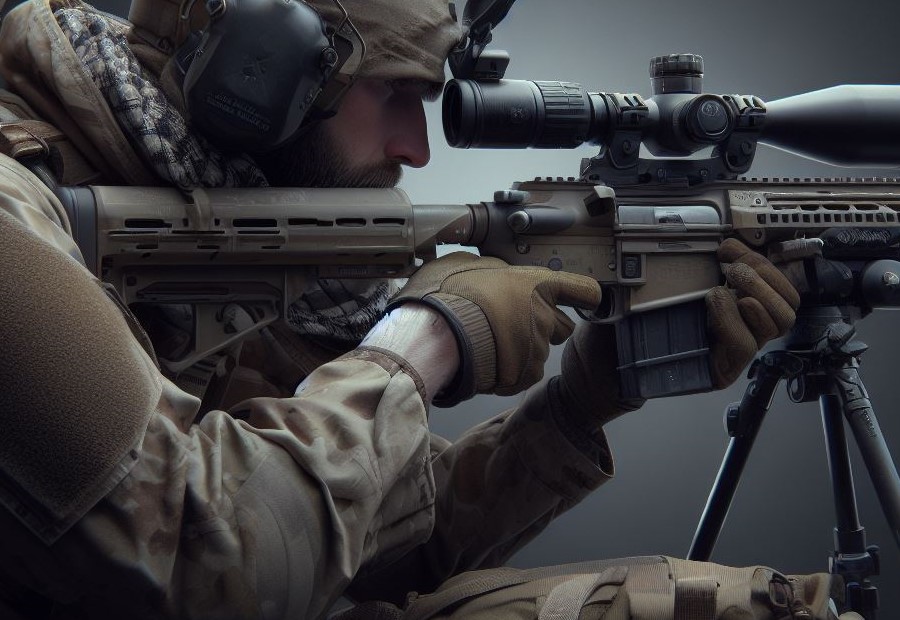
Preparing for a scope sight-in requires gathering the necessary equipment and ensuring safety precautions. Get ready to elevate your shooting skills as we explore the key steps to set up your scope at 50 yards.
Strap in, grab your gear, and let’s dive into the world of precise aiming and accuracy. It’s time to take your shooting game to the next level!
Gather the Necessary Equipment
Gathering the necessary equipment is crucial when preparing to sight in a scope. Below is a list of the essential items you will need:
- A rifle with the scope already mounted.
- Ammunition specific to your rifle.
- A shooting rest or sandbags to provide stability.
- An adjustable wrench or screwdriver to make any necessary adjustments.
- A boresighter or laser sight for initial alignment.
- A target to shoot at.
- A spotting scope or binoculars to examine your shot placement.
Having all of these equipment will ensure that you have everything you need to properly sight in your scope and make accurate adjustments.
Last year, I went on a hunting trip with my friends to the mountains. We knew that properly sighting in our scopes was essential for a successful hunt. One of my friends, Tom, forgot to bring his adjustable wrench to make adjustments to his scope.
We tried improvising with other tools we had, but none of them worked properly. As a result, Tom struggled to zero in his rifle and had inconsistent shot groups throughout the trip.
It taught us the importance of gathering the necessary equipment beforehand to avoid any setbacks or compromises in accuracy.
Since then, we always double-check our gear to ensure we have everything we need for a successful scope sight-in.
Ensure Safety Precautions
To ensure safety while sighting in a scope, it is paramount to prioritize safety precautions.
By following these steps, you can minimize the risk of accidents or injuries:
- Always wear proper eye and ear protection during the process.
- Ensure you are in a safe shooting location, away from any people or property that could be impacted by the shots.
- Check that the firearm is unloaded and the safety is engaged before starting the sight-in process.
- Handle the firearm with care, keeping your finger off the trigger until you are ready to shoot.
- Keep the muzzle of the firearm pointed in a safe direction at all times.
- When adjusting the scope or making any changes to the firearm, ensure the firearm is unloaded and the safety is engaged.
- Follow all local laws and regulations regarding firearm use and safety.
- Regularly inspect and maintain your firearm to ensure it is in proper working condition.
It is crucial to prioritize safety precautions when handling firearms. By following these safety guidelines, you can ensure safety while sighting in a scope.
Step-by-Step Guide to Sight in a Scope at 50 Yards
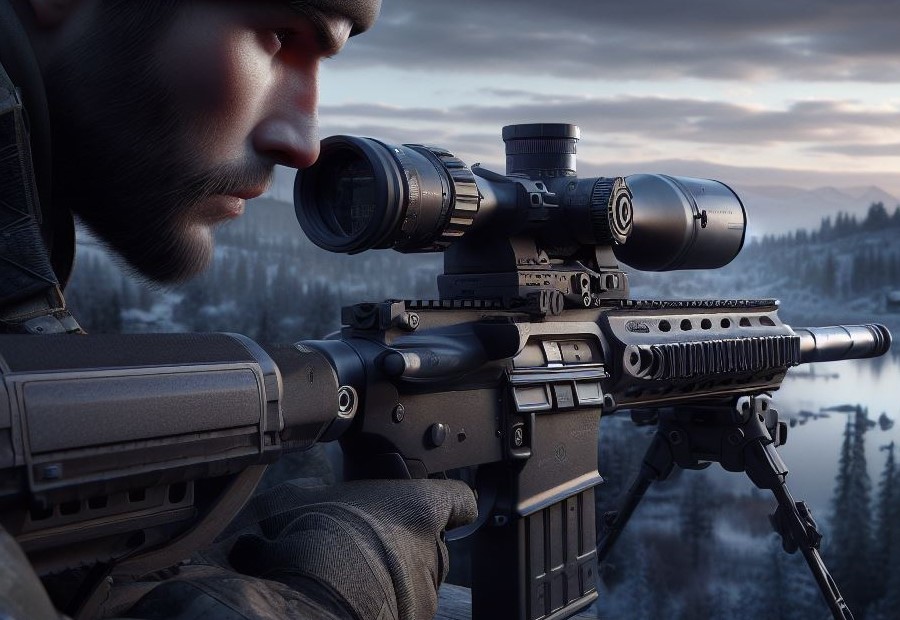
Immerse yourself in this step-by-step guide that will take you through the process of sighting in your scope at 50 yards.
From setting up a stable shooting rest to fine-tuning your adjustments, this walkthrough covers all the necessary steps to ensure your scope is perfectly aligned. Discover the art of mounting the scope, implementing boresighting techniques, and troubleshooting common issues along the way.
Get ready to elevate your shooting accuracy and experience the satisfaction of hitting your target with precision.
Set up a Stable Shooting Rest
When preparing to sight in a scope, it is crucial to set up a stable shooting rest in order to ensure accuracy and consistency in your shots. Here is a step-by-step guide to help you set up a stable shooting rest:
- Select a sturdy and level surface to set up your shooting rest.
- Place a shooting bag or sandbag on the surface to provide support for the front of your firearm.
- Position your rifle securely in the shooting rest, making sure it is stable and won’t move during the sighting process.
- Adjust the shooting rest to align your rifle at the desired shooting height and angle.
- Use additional sandbags or support for the rear of your rifle to provide stability and further minimize any movement.
- Check that your shooting rest and rifle are properly secured and that there is no wobbling or movement.
- Take a few practice shots to ensure that the shooting rest is providing the necessary stability for accurate shooting.
In addition to setting up a stable shooting rest, it is also essential to consider using a quality scope and optics, as well as taking proper safety precautions during the sight-in process.
Always follow the manufacturer’s instructions for mounting and adjusting your scope, and make sure you are shooting in a safe and controlled environment.
Mount the Scope Properly
When it comes to sighting in a scope, one crucial step is mounting the scope properly. To ensure a proper mounting, follow these steps:
- Begin by cleaning the rifle’s scope mounting area and the scope rings to remove any dirt or debris. This will guarantee a secure fit.
- Attach the scope rings to the rifle’s receiver or base, ensuring proper alignment. Use an appropriate screwdriver or wrench to tighten the screws.
- Carefully place the scope into the rings, making sure it is centered and level. The reticle should be both vertical and horizontal.
- Tighten the scope ring screws evenly, alternating between screws. This will provide a secure hold without exerting excessive pressure on any particular point.
- Regularly check the tightness of the scope rings to ensure they remain secure. However, be cautious not to over tighten, as this may damage the scope or affect its performance.
Pro-tip: Before mounting the scope, consider investing in a quality scope mounting kit that includes a torque wrench. This will help you achieve the correct tightening specifications, ensuring a proper and secure mounting of the scope.
Boresight the Scope

To boresight the scope, follow these steps:
- Remove the bolt or slide of the firearm to ensure it is unloaded.
- Secure the firearm in a stable shooting rest.
- Boresight the scope by looking through the barrel from the breech end and aligning it with a distant object.
- Without moving the firearm, adjust the scope’s windage and elevation dials to center the crosshairs on the same object.
- Look through the scope and check if the crosshairs align with the same distant object. Adjust the scope as needed until alignment is achieved.
- Once the scope is boresighted, reassemble the firearm and prepare for further sighting-in steps.
Following these steps will ensure that the scope is aligned with the firearm’s barrel, providing a starting point for more precise adjustments during the sighting-in process.
Remember to always follow safety precautions during firearm handling and consult the manufacturer’s instructions for specific details on boresighting your particular scope.
Take Preliminary Shots
When it comes to sighting in a scope, taking preliminary shots is an important step in the process. Here is a step-by-step guide to help you through this stage:
- Prepare the firearm: Ensure the firearm is unloaded and in a safe condition.
- Set up a stable shooting rest: Use a secure and stable rest to support the firearm and provide a steady shooting platform.
- Aim at the target: Align the crosshairs of the scope with the center of the target.
- Take multiple shots: Fire a few rounds at the target, focusing on consistent and controlled shooting techniques.
- Observe bullet impact: Examine the bullet holes on the target to determine if they are on target or needing adjustment.
- Analyze the shot group: Evaluate the proximity of the shots to each other to understand the consistency of the rifle’s accuracy.
- Make necessary adjustments: Based on the bullet impact, adjust the scope’s windage and elevation dials accordingly to bring the shots closer to the desired point of impact.
Pro-tip: It is crucial to take note of the exact adjustments made during this preliminary stage to properly fine-tune the sight. Keeping a record of any changes will help you track your progress and make further adjustments if needed.
Make Windage and Elevation Adjustments
To effectively make windage and elevation adjustments while sighting in a scope at 50 yards, follow these step-by-step instructions:
- Ensure the unloaded rifle is pointed in a safe direction.
- Consult the windage and elevation adjustment knobs in the scope’s user manual.
- Utilize an appropriate tool like a coin or screwdriver to adjust the windage knob. Rotate it clockwise to shift the point of impact to the right, and counterclockwise to shift it to the left.
- Similarly, use the tool to manipulate the elevation knob. Turn it clockwise to elevate the point of impact, and counterclockwise to lower it.
- Implement small adjustments and fire a group of shots to evaluate the point of impact.
- Repeat steps 3 to 5 until the desired point of impact is achieved.
By adhering to these instructions, you can effectively make windage and elevation adjustments to properly sight in your scope at 50 yards.
Fire Groups and Fine-Tune
When it comes to the process of sighting in a scope and fine-tuning your shots, here are the steps to follow:
- Prepare your target range and position yourself in a stable shooting rest.
- Mount the scope properly on your firearm, ensuring it is secure and aligned.
- Boresight the scope by aligning the reticle with a fixed point on the target.
- Take preliminary shots to get a sense of where your shots are landing.
- Based on the impact location, make windage and elevation adjustments on the scope.
- Fire groups of shots, making minor adjustments to your aim each time to fine-tune your accuracy.
- Continue making adjustments and firing groups until your shots consistently hit your desired target.
During this process, it’s important to stay focused and take your time to ensure accuracy. Be mindful of any parallax issues that may affect your sight, adjusting as needed.
Address any accuracy problems you encounter by evaluating and adjusting your shooting technique.
Following these steps will help you properly fire groups and fine-tune your shots to achieve optimal accuracy with your scoped firearm.
Verify Zero
To verify zero on a scope, follow the steps below:
| Step | Description |
| 1 | Set the target at the desired distance, in this case, 50 yards. |
| 2 | Aim and take a shot at the center of the target. |
| 3 | Check where the bullet hits the target. If it is not aligned with the center, make adjustments to the windage and elevation. |
| 4 | Take multiple shots, making slight adjustments to fine-tune the scope’s accuracy. |
| 5 | Continue this process until the bullet consistently hits the center of the target. |
| 6 | Once the bullet consistently hits the center, your scope is verified to be zeroed at 50 yards. |
By following these steps, you can ensure that your scope is accurately zeroed at the desired distance. Remember to make precise adjustments and take multiple shots to fine-tune the accuracy.
Troubleshooting Common Issues
- Dealing with Parallax: If you encounter parallax in your scope, which is when the reticle appears to move when you move your eye, there are a few steps you can take. Firstly, ensure that your scope is properly mounted and secured. Adjust the parallax knob on the side of the scope to the appropriate yardage. If the parallax persists, try closing one eye while looking through the scope to eliminate eye movement as a factor.
- Addressing Accuracy Problems: If you are facing accuracy problems with your scope, there are various potential causes to consider. Check that all screws and mounts are tightly secured to prevent any movement. Ensure that the scope is properly aligned with the bore of the rifle. If accuracy issues persist, try cleaning the lens of the scope to ensure clear visibility. Additionally, it may be helpful to seek assistance from a professional gunsmith or experienced shooter.
Dealing with Parallax
When dealing with parallax while sighting in a scope, there are a few steps you can take to minimize its effects:
- Adjust the parallax setting: Most scopes have a parallax adjustment feature that allows you to focus the reticle and eliminate parallax error. Use this feature to match the target’s distance and ensure a clear and accurate image.
- Maintain proper eye relief: Make sure you have the correct distance between your eye and the scope’s eyepiece. This will help reduce the chances of parallax error and provide a consistent sight picture.
- Check your shooting position: Ensure that your head and eye alignment with the scope remain consistent throughout each shot. Any movement or misalignment can introduce parallax errors.
By implementing these steps, you can effectively deal with parallax and improve the accuracy of your scope’s sights.
Addressing Accuracy Problems
Addressing accuracy problems is of utmost importance when it comes to sighting in a scope.
To ensure pinpoint shot placement, it is crucial to identify and rectify any issues pertaining to accuracy. Here are some steps that can be taken:
1. To begin with, examine the mounting of the scope. It is essential to ensure that it is securely attached to the firearm and properly aligned. Any loose screws or misalignment can have a detrimental effect on accuracy.
2. Evaluate the stability of the shooting rest. An unsteady or unstable rest can introduce errors into the shooting process. It is recommended to use a solid and dependable rest in order to achieve consistent results.
3. Consider the ammunition being utilized. It is important to note that different types and brands of ammunition may possess varying levels of accuracy. Experimenting with various loads can help determine the one that performs optimally with the specific firearm and scope.
4. Analyze the techniques employed during the shot. Proper control of the trigger, proper breathing, and follow-through are vital for maintaining accuracy. Practicing good shooting habits and striving for consistency are key.
5. Check for any barrel harmonics or vibrations. The movement of the barrel can affect accuracy. It is necessary to ensure that the barrel is securely fastened and free from any obstructions.
6. Assess the prevailing wind conditions. Strong winds can have a significant impact on shot placement. It is important to take into account the speed and direction of the wind and make adjustments accordingly.
7. Finally, if accuracy problems persist, it is advisable to consult with an experienced shooter or firearms expert. They can offer guidance and assistance in troubleshooting and resolving any issues that may arise.
By effectively addressing accuracy problems, it is possible to enhance shooting performance and achieve a higher level of precision when using a scoped firearm.
Additional Tips and Recommendations
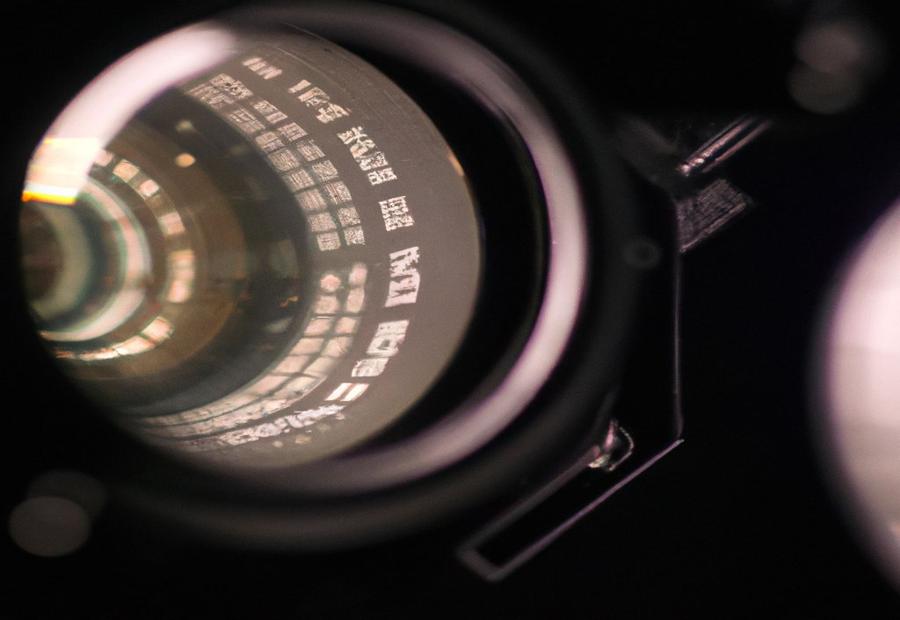
Photo Credits: Paintballbuzz.Com by David Martinez
Increase stability: Use a stable shooting rest or sandbags to provide a solid base for your rifle.
Check for parallax: Adjust the scope’s parallax to ensure a clear and focused sight picture.
Start with a close target: Begin sighting in your scope at a closer distance, such as 25 yards, to get a rough zero.
Make precise adjustments: Use the scope’s adjustments to move the reticle in the desired direction, following the instructions provided by the manufacturer.
Shoot multiple groups: Fire several rounds at the target to establish consistency and ensure accurate results.
Check for consistency: Verify that your shot groups are consistent by analyzing their placement on the target.
Fine-tune the adjustments: Make small adjustments to the scope as needed to achieve the desired point of impact.
Re-check at target distance: Once you have achieved a consistent and accurate zero at the closer distance, move to the 50-yard target and repeat the process.
Record your settings: Take note of the adjustments made to the scope, as well as any other factors that may have influenced the shot placement.
Practice and confirm: Regularly practice and confirm your zero at the desired distance to maintain accuracy.
Frequently Asked Questions
Can iron sights be sighted in at 50 yards?
Yes, iron sights can be sighted in at 50 yards using a similar process as sighting in a scope.
How important is practice shooting when it comes to accuracy?
Practice shooting is crucial for improving accuracy. It helps to develop proper technique and familiarity with your firearm.
What equipment do I need to sight in a scope at 50 yards?
You will need a rifle rest, paper targets with a bullseye and grid, eye and ear protection, staple gun, tools, and a gun case.
What is bullet drop and how does it affect sighting in a scope at 50 yards?
Bullet drop refers to the distance a bullet will drop as it travels through the air. When sighting in a scope at 50 yards, you need to account for bullet drop and make adjustments accordingly.
How do I ensure proper follow-through when sighting in a scope?
To ensure proper follow-through, maintain control of your firearm after the shot is fired. This includes maintaining your aim and focus until the bullet reaches the target.

